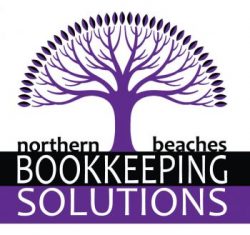As cashless payments become the norm in Australia, small businesses must adapt to meet customer expectations and streamline financial processes. From EFTPOS to mobile payments, here’s how to update your payment systems, manage cash flow, and stay on top of bookkeeping for electronic transactions.
Why Aussies Prefer Cashless Payments
Australians are increasingly choosing electronic payments over cash for convenience, speed, and security. Key reasons include:
- Contactless Payments: Tap-and-go technology offers a quick and convenient way to pay, reducing waiting times at checkout.
- Mobile Wallets: Apps like Apple Pay, Google Pay, and Samsung Pay make it easy to store payment information and complete transactions without physical cash.
- Online Shopping: E-commerce platforms often require electronic payments, further reducing the need for cash.
- Tracking and Security: Digital payments provide a transaction record, helping customers and businesses track spending and prevent fraud.
Benefits of Cashless Payments for Small Businesses
Transitioning to electronic payments offers several advantages for small businesses:
- Reduced Cash Handling: Minimises the risk of theft and cash shortages.
- Faster Transactions: Speeds up checkout times and improves customer service.
- Enhanced Cash Flow: Payments are processed instantly, improving cash flow management.
- Accurate Record-Keeping: Digital payments automatically generate transaction records, making bookkeeping easier.
Popular Electronic Payment Methods in Australia
To accommodate cashless payments, consider implementing the following payment methods:
- EFTPOS Terminals: Accept debit and credit card payments, including contactless tap-and-go transactions.
- Mobile Payment Apps: Integrate with Apple Pay, Google Pay, and Samsung Pay for seamless mobile payments.
- Online Payment Gateways: Platforms like PayPal, Stripe, and Square enable secure online transactions.
- Direct Bank Transfers: Allow customers to pay directly from their bank account, reducing transaction fees.
How to Implement Cashless Payments for Your Business
To successfully transition to electronic payments, follow these steps:
- 1. Choose a Payment Provider: Select a reliable payment provider that offers EFTPOS, mobile payments, and online gateway options.
- 2. Integrate Payment Systems: Connect your POS system with digital payment platforms to streamline transactions.
- 3. Update Accounting Software: Ensure your accounting software can track electronic transactions and reconcile payments automatically.
- 4. Educate Staff and Customers: Train staff on handling cashless payments and inform customers about accepted payment methods.
Managing Cashless Transactions in Your Bookkeeping System
Electronic payments can simplify bookkeeping, but they require accurate record-keeping to maintain financial transparency. Consider these tips:
- Categorise Transactions: Separate cashless payments by method (e.g., EFTPOS, mobile payments, direct transfers) to track revenue streams.
- Reconcile Bank Statements: Match electronic payments with bank deposits to identify discrepancies.
- Monitor Fees: Track transaction fees and ensure they are correctly recorded as business expenses.
- Automate Reporting: Use accounting software to generate reports and monitor cash flow in real time.
Potential Challenges of Cashless Payments
While cashless payments offer many benefits, they can also present challenges, such as:
- Transaction Fees: Payment providers may charge fees for EFTPOS and mobile transactions.
- Technical Issues: System outages can disrupt payment processing.
- Data Security: Protecting customer payment information is crucial to prevent fraud.
Need Help Managing Electronic Payments?
Transitioning to cashless payments requires effective cash flow management and accurate record-keeping. At Northern Beaches Bookkeeping Solutions, we provide comprehensive bookkeeping services to track electronic transactions, monitor cash flow, and manage financial records. Contact us today to learn more about our bookkeeping solutions for small businesses.
